Case Studies
-
Dialysis Instruments (Blood Warmers)
-
category :
Medical
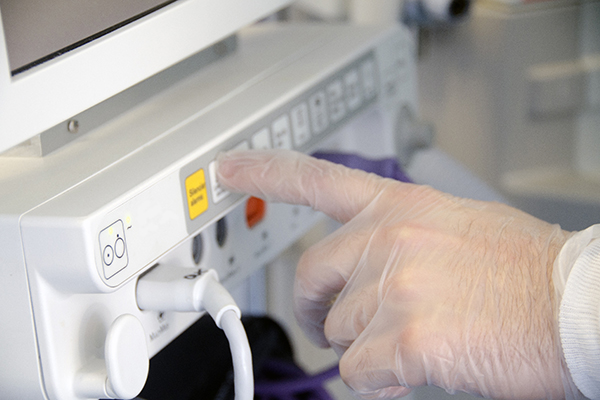 Every year, the number of patients around the world who are suffering from renal failure and need dialysis treatments are increasing. Since dialysis treatments take out water from the human body, the fluids need to be replenished. This fluid is called dialysis fluid.
Every year, the number of patients around the world who are suffering from renal failure and need dialysis treatments are increasing. Since dialysis treatments take out water from the human body, the fluids need to be replenished. This fluid is called dialysis fluid.
In order to replenish the dialysis fluid in the body, the fluid needs to warmed to body temperature (about 37±0.2°C), to prevent the patient's body temperature from lowering.
This is where Kawai Corporation's heaters are used. For these heaters, our customers (the dialysis instrument makers) have the following needs:
(1) The device must start up quickly.
(2) However, the temperature must not rise too quickly and overshoot the mark if at all possible, as this is a medical device.
(3) After starting up, the device must properly maintain the temperature.
In order to realize quick startup times, it's necessary to apply power (high wattage); but if the wattage is too great, the temperature will overshoot, which would overheat the dialysis fluid and cause danger to the patient. For this reason, we created a dual-circuit heater. The device starts up in dual-circuit mode, and when the temperature reaches the correct levels, one circuit switches off, allowing the heater to be used at half-capacity.
Dual-circuit products are an excellent example of how we at Kawai Corporation have put our experience and technology to good use in meeting the customer's needs. At Kawai Corporation, we can often provide a way to meet two apparently conflicting needs.Products :
-
Analysis Devices (Sample Heaters/Warmers)
-
category :
Medical
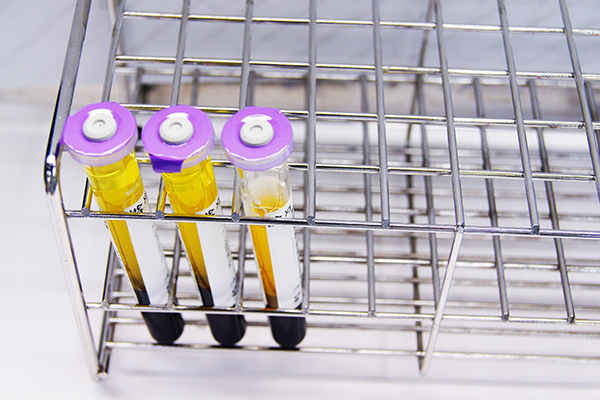 We've received several requests in the past for a device to warm blood. One good example is when we handled a request from a hemanalysis device manufacturer, who wanted to produce a chemical reaction by mixing liquid medicine in with the blood sampled from a test subject and heating it up to 37ºC.
We've received several requests in the past for a device to warm blood. One good example is when we handled a request from a hemanalysis device manufacturer, who wanted to produce a chemical reaction by mixing liquid medicine in with the blood sampled from a test subject and heating it up to 37ºC.
The difficulty in developing this heater for a hemanalysis device is that up to 1,000 blood samples may need to be heated all at once, with only a ±0.1ºC variation—which means very strict soaking control. All of the samples must be evenly heated, with the heat going through an aluminum block, and then through oil (which has poor thermal conductivity), and then by mixing the oil.
Although noise produced from the heater was initially a problem, we managed to solve the problem by using AMP connectors (effective in medical equipment uses) and an Elmwood thermostat, searching for and developing a purchasing channel for materials that Kawai Corporation does not usually use.
This case was one that led to future successes in terms of solving problems by putting together technology and materials, using materials we had no previous experience with. Our sincere hope is that we can be of use to our customers by offering the experience that we have gained over the past 85 years.Products :
-
Testing Devices (Cleaning Fluid Warmers)
-
category :
Medical
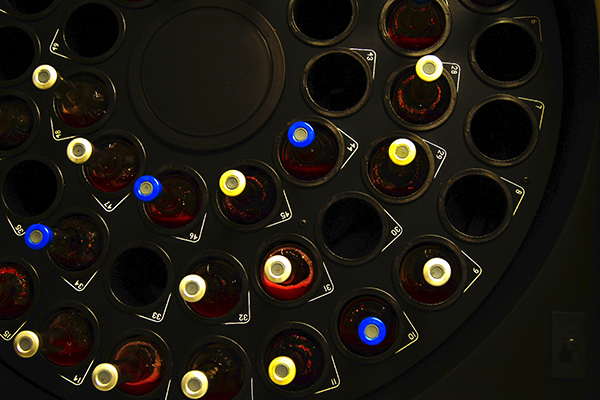 Some testing devices are able to process different samples automatically, over and over. These devices are equipped with the necessary cleaning solutions and may wash pipettes, nozzles, reactors, or tanks. Kawai Corporation has received requests from customers for a method to warm the cleaning solution in such devices.
Some testing devices are able to process different samples automatically, over and over. These devices are equipped with the necessary cleaning solutions and may wash pipettes, nozzles, reactors, or tanks. Kawai Corporation has received requests from customers for a method to warm the cleaning solution in such devices.
Although you can probably figure out why the cleaning solution needs to be warmed, the reason is because water that has been heated to around 37ºC is more effective for cleaning—the same principle as when you wash the dishes. Washing with cold water could leave ingredients from previous samples not being properly washed off, which could lead to a misdiagnosis. Too much heating could destroy the ingredients of the cleaning solution; and whether the samples are overheated or not properly heated, they can't be properly cleaned.
For this purpose, a long 5 m tube heater is used to gradually heat the solution, and a long water channel is used so that the water more easily returns to room temperature before cleaning. Standard tube heaters are a maximum of 3 m long due to limitations in the manufacturing process. It was exceptionally difficult to establish a special manufacturing process for a 5 m long tube heater. That aside, we shared the reasons why this length of heater would be required with the production workplace, and worked as a team to make the 5 m long tube heater a reality.
Tubes that warm up (or tube heaters, as they are called) are rather uncommon products, and they have gone over extremely well with our customers. We have also received requests to study tube heaters with shorter and thinner parts.
Although Kawai Corporation's existing tube heater uses a silicone rubber heater wrapped around a tube, which renders the inside opaque, we have had requests to make the tube transparent... so we'll be adding a transparent tube heater to our lineup in the future!Products :
-
Artificial Respirators (Inhalant Warmers)
-
category :
Medical
When it comes to safety requirements, as everyone certainly recognizes, the level of requirements towards the field of medical equipment is extremely high. Heaters are necessary for medical equipment such as artificial respirators, which are used for patients whose life support situation is precarious, such as when they cannot breathe well or at all on their own.
During normal breathing, the air that you breathe passes through the upper respiratory tract and is warmed by the respiratory mucosa before flowing to the body's organs. However, in the case of gas inhaled from an artificial respirator, it remains as dry gas which can cause damage to the epithelial cells in the trachea and bronchial tubes, not to mention impair their fimbric movement, which may cause atelectasis or increase the risk of infection. The inhaled gas within the body changes with even minor fluctuations in temperature, humidity, and absolute humidity. This is why controlling the temperature and humidity of inhaled gas in an artificial respirator is of critical importance.
We received a request in which the customer said they could not immerse a heater directly into a water tank for sanitary reasons, so they needed a way to indirectly heat the outside of the tank.
At the hospital, heaters are periodically removed, so the ease of maintenance for the heater was important. Kawai Corporation proposed the installation of a silicone rubber heater around the outside of the tank, as the area of the tank was small. The temperature fuse and thermocouple would both serve to control the temperature for safety purposes, and heater and insulator were to be combined to ensure adhesion as well as to allow for easy installation and removal. These methods made it possible to reduce the burden on workers.
Despite this, when considering the heater installation area and the necessary wattage, as the watt density would be high, we made frequent and detailed inquiries on how the heater would be used. It was necessary to make detailed decisions to place limits on the number of hours the heater should be used at maximum temperature.
We are planning to hold product lifespan tests to check the condition of the internal heating element.
In the past, we decided that some cases like this would be impossible in light of product safety and lifespan... but in this case, we put our heads together with the customer and created rules on how the product would be used, to realize new possibilities. Control through establishing rules is not as thorough as we would like yet, so we want to continue to make proposal to our clients from this perspective.Products :
-
Anti-Bacterial Devices (Defrosters)
-
category :
Medical
It's well known in the fields of medicine and chemistry that there is a close relationship between the density and temperature of matter. When the temperature changes, the density of matter also changes, due to effects of thermal expansion on the volume.
Some medical equipment requires that materials such as samples or bactericidal factors are to be maintained at a certain density. Kawai Corporation heaters are used to heat these materials, keeping them at a given temperature. For instance, requests to heat concentration meters in sterilizers are born from these needs.
We received a request to supply a heater that could stabilize temperatures, in order to stabilize the concentration of sterilization factors used in sterilizers for medical and research institutions. When the equipment was developed, the size of the device was preestablished with no considerations given to the installation of a heater. For this reason, we needed to install heaters after the fact. We made our proposals for the heater shape and installation method after checking the actual equipment and much trial and error.
Since the product was mainly to be sold in the U.S., the specs needed to conform to UL standards. As Kawai Corporation has experience with our own products in such matters, we worked together with the customer to put together the necessary documentation and fully supported the customer in acquiring UL certification.
The customer was extremely satisfied with the specifications of the heater, as it was just the perfect shape and method of installation. The project turned out to be a major asset for us as well, as the customer trusted Kawai Corporation as the only manufacturer that would be willing to help them through the difficulties of meeting the requirements of third-party organizations such as UL. We diligently stuck with the laborious task of submitting the necessary schematics, specifications, and other documentation in English.
Since medical equipment requires a great deal of time in official registration with organizations such as the FDA, it will take about five years from the start of development before the product is mass-produced. We're ready and willing to meet the challenge of making improvements, to meet any and all requests that are sure to follow!Products :
-
Dental Instruments (Water Heaters/Warmers)
-
category :
Medical
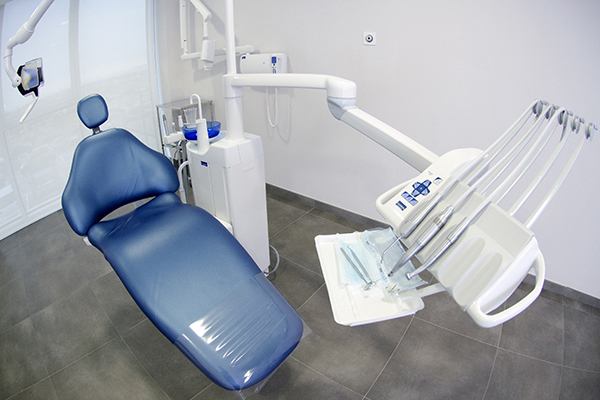 When you go to the dentist and they ask you to rinse out your mouth, have you ever felt that your teeth and gums were stinging because the water was too cold?
When you go to the dentist and they ask you to rinse out your mouth, have you ever felt that your teeth and gums were stinging because the water was too cold?
The water rinsing unit (where the patient places a cup that automatically fills up with 80-100 cc of water) is located next to the dental unit where the patient sits. The water reservoir tank contains about two cups of water, which is heated by an attached water heater.
There are different kinds of heaters, such as immersible cartridge heaters and band heaters that are attached externally. Water is continually replenished in the tank, and the heater is controlled by a thermostat that is attached to the outside of the tank. As the heater is designed to heat the water to a lukewarm temperature, the total amount of time that it operates is comparatively short. The heater shuts off after heating the water for about one minute, heating 70ºF (22ºC) water to a temperature of 90–100ºF (32-42ºC) before it is poured into the cup. This prevents patients from feeling that stinging or unpleasant sensation in their teeth when rinsing with cold water.
One of our customers, a dental unit manufacturer, used to have corrosion problems with the immersion heaters that they were using... but after they switched to Kawai Corporation products, they told us that they've been free from their troubles. This kind of problem was to be expected, as we've proven in many tests regarding corrosion that occurs when metal is used in fluids.
Our customer tells us that they want to do away with the water tank and heat the water as it flows along the water channel, in order to supply even more sanitary water. They are still deciding on a heater. We're still researching their request, as a high-wattage heater that gets rather hot would be required. It's not an easy challenge, but we at Kawai Corporation haven't given up. We continue to work towards finding an even more sanitary method to heat water, to establish as the standard for dental units.Products :
-
Radiotherapy Devices (Brace Manufacturing)
-
category :
Medical
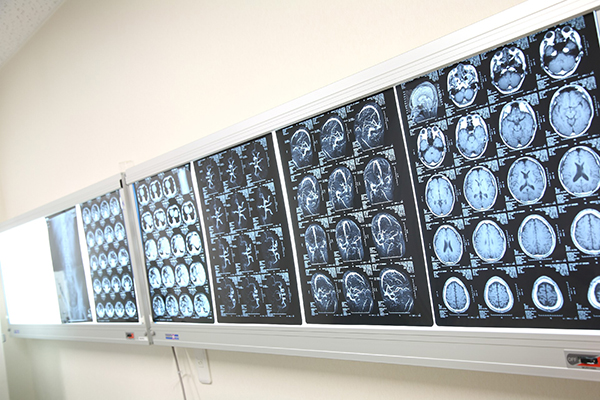 In radiation therapy used for treating cancer, it is necessary to expose the same part of the body to radiation for days, and sometimes even weeks. However, depending on the patient's posture when lying down, the radiation could miss the targeted part of the body. A brace is used so that the part of the body in question is held in place, to be exposed to the radiation during treatment. These braces are designed to meet the shape of the body part in question (for instance, the head) for each patient, since every patient is different. We create the braces by heating a special plastic panel to make it pliable, and then apply it to the part of the body that needs to remain in place to create a mold. When the plastic cools down, we use the hardened shape as a brace. To do this, first the plastic panel needs to be heated.
In radiation therapy used for treating cancer, it is necessary to expose the same part of the body to radiation for days, and sometimes even weeks. However, depending on the patient's posture when lying down, the radiation could miss the targeted part of the body. A brace is used so that the part of the body in question is held in place, to be exposed to the radiation during treatment. These braces are designed to meet the shape of the body part in question (for instance, the head) for each patient, since every patient is different. We create the braces by heating a special plastic panel to make it pliable, and then apply it to the part of the body that needs to remain in place to create a mold. When the plastic cools down, we use the hardened shape as a brace. To do this, first the plastic panel needs to be heated.
We received a request to create a hot plate that could warm this plastic panel... but after inquiry with the client, we found that temperature distribution would be the biggest issue. Using the existing method, they would heat the plastic plate by clamping it from above and below with two SUS plates, which are heated by a wraparound wire heating element. However, we found that the plastic plates could not be uniformly heated using this method, and that there was a difference between areas which came in contact with the heating element as opposed to areas that did not. Some parts of the plastic panel would get softer more quickly or more slowly than others... which resulted in different hardening times, and a less than stellar brace.
We proposed that the SUS plate be changed to aluminum, which offers better thermal conductivity and more even heating. Instead of using a wire-shaped heating element, we also proposed that the heating wire density be modified (considering the heat dispersion from all four sides of the plate), and that a silicone rubber heater be used for more even heating.
In addition to the many trials and experiments performed, it was the decisive action and ability to propose new ideas on the part of our Engineering Department that made it possible to offer a product that satisfied the specs from our customer.Products :